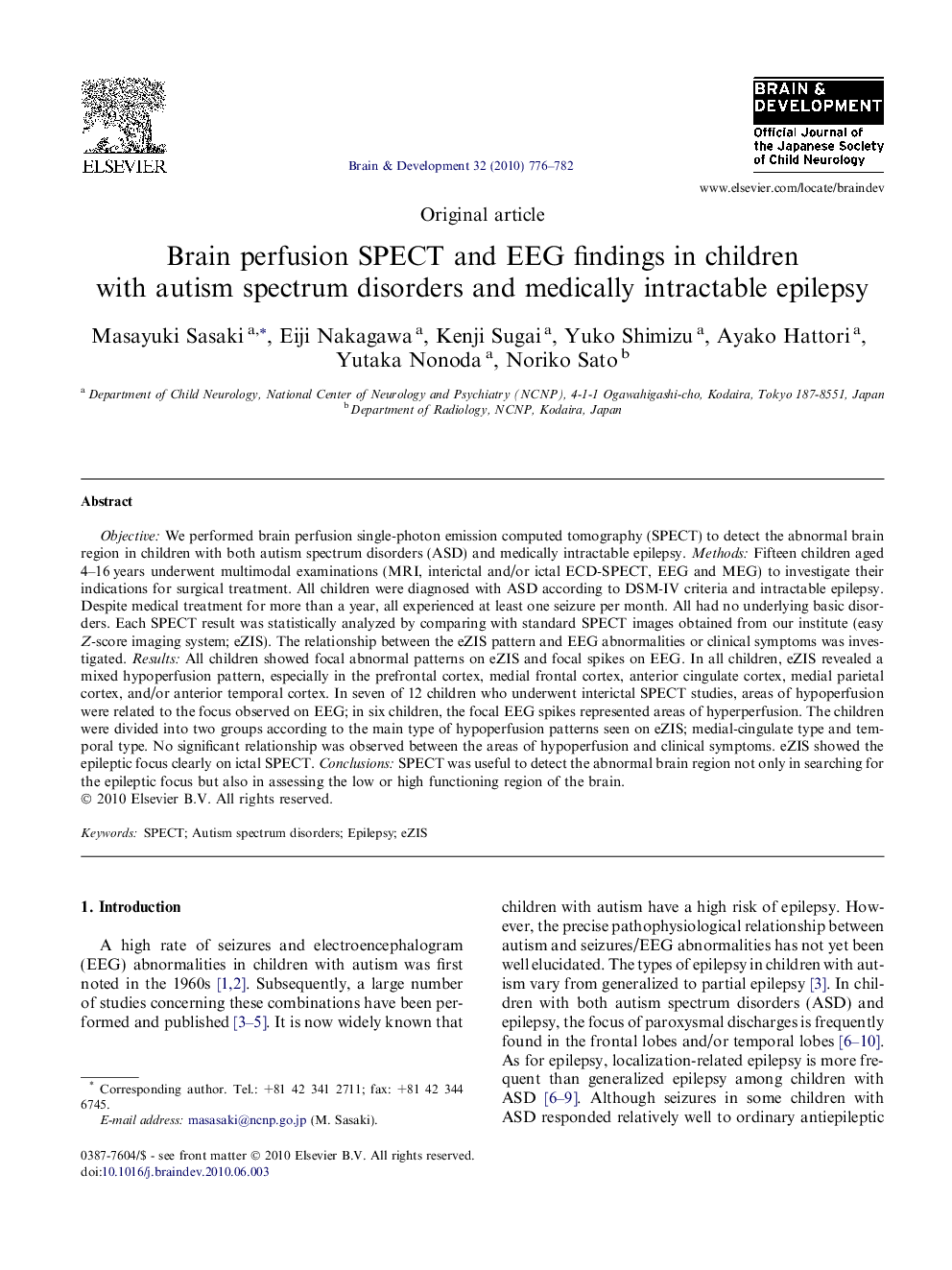| کد مقاله | کد نشریه | سال انتشار | مقاله انگلیسی | نسخه تمام متن |
|---|---|---|---|---|
| 3037909 | 1184436 | 2010 | 7 صفحه PDF | دانلود رایگان |

Objective: We performed brain perfusion single-photon emission computed tomography (SPECT) to detect the abnormal brain region in children with both autism spectrum disorders (ASD) and medically intractable epilepsy. Methods: Fifteen children aged 4–16 years underwent multimodal examinations (MRI, interictal and/or ictal ECD-SPECT, EEG and MEG) to investigate their indications for surgical treatment. All children were diagnosed with ASD according to DSM-IV criteria and intractable epilepsy. Despite medical treatment for more than a year, all experienced at least one seizure per month. All had no underlying basic disorders. Each SPECT result was statistically analyzed by comparing with standard SPECT images obtained from our institute (easy Z-score imaging system; eZIS). The relationship between the eZIS pattern and EEG abnormalities or clinical symptoms was investigated. Results: All children showed focal abnormal patterns on eZIS and focal spikes on EEG. In all children, eZIS revealed a mixed hypoperfusion pattern, especially in the prefrontal cortex, medial frontal cortex, anterior cingulate cortex, medial parietal cortex, and/or anterior temporal cortex. In seven of 12 children who underwent interictal SPECT studies, areas of hypoperfusion were related to the focus observed on EEG; in six children, the focal EEG spikes represented areas of hyperperfusion. The children were divided into two groups according to the main type of hypoperfusion patterns seen on eZIS; medial-cingulate type and temporal type. No significant relationship was observed between the areas of hypoperfusion and clinical symptoms. eZIS showed the epileptic focus clearly on ictal SPECT. Conclusions: SPECT was useful to detect the abnormal brain region not only in searching for the epileptic focus but also in assessing the low or high functioning region of the brain.
Journal: Brain and Development - Volume 32, Issue 9, October 2010, Pages 776–782